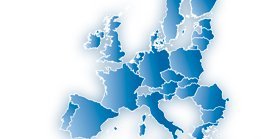The European Union as a model of learning from History
The European federalist movement (Movimiento Federalista Europeo - MFE) took form during and in the aftermath of the Second World War with Resistance fighters like Altiero Spinelli. The two World Wars convinced the Europeans that only the shaping of a European community, which implies interdependence and solidarity, would bring long-term peace and stability to the continent. While European nation-states were often caught in wars as a result of empire expansion, only a new institutional, political and economic construction in Europe would allow for a better future. Hence, the analysis of history has enabled the European countries to go beyond their historical antagonisms and to build a community for a better future’
The analysis of history has enabled the European countries to go beyond their historical antagonisms.
The establishment of the European Union also cannot be understood without taking into account the historical context after the Second World War: the necessity of a peaceful and stable reconstruction of the continent, a European economy in ruin, the fear of communism, the American influence… As a result, learning the lessons of history is crucial to give an impetus to the development of a project for the future.
However History should not be a trap for the construction of the future
When I say ‘being used by history’, I mean that history is a major element when decisions are taken and acts are signed, without taking into account the interests and the necessity of the present situation. When one is completely focused on the past, the past can block all alternative perspectives for the future. To sum up, I would say that in this situation history becomes a trap which one does not manage to escape.
One of the most striking examples of this ‘trap’ was the return of the ‘martyr’ spirit in Poland after the plane crash in Katyn which caused the death of President Lech Kaczyński. We have seen how many Polish politicians put the event into a historical context in order to understand it. As a result, the Polish population seemed to be trapped in a past without any possibility of escaping it. I hope that the arrival of a new President in Poland will enable the Polish people to project themselves more deeply into a future rather than to be sacrificed for a national past. European integration will deepen when member states are not managed by a national past. History is a fact without possibility of change whereas the present and the future are a construction where everything is possible.
Future is a construction
Even though history is an element of the future, countries have to realise that their fate mainly depends on themselves and their decisions and acts. This implies that every government, every country, is responsible for its own future and should not hide behind its history when (re)establishing relations with other states.
The future of the European Union is being built by the European countries now and not in the past.
The last remaining feelings of distrust within the European Union will disappear when history will not be used anymore by member states in bilateral and multilateral relations with their European partners. This does not mean that history is not significant but it cannot justify every current decision and act. The future of the European Union is being built now by the European countries and not in the past.
The European Union gives us the best example of a construction of a union of member states with common policies and institutions which are shaped by history but focused on the future. The past should not be the main handicap of this wonderful message of peace and stability as the past is impossible to change.

Follow the comments: |
|
